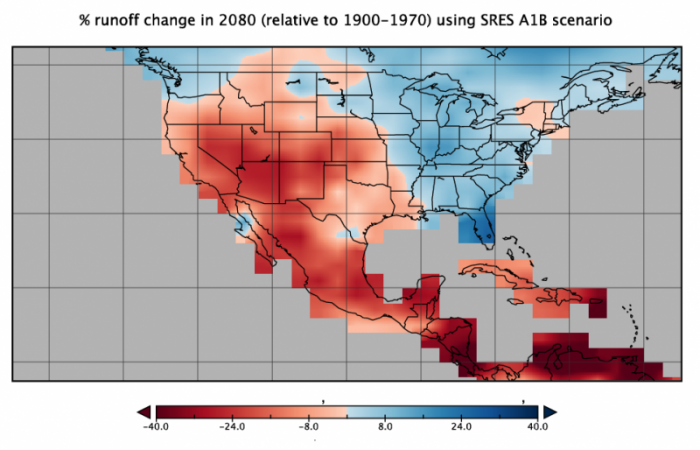Water Resources
The issues with water supply are largely related to changing precipitation patterns that will leave many areas drier and with more frequent droughts, while other areas will have to cope with greater precipitation and more frequent severe floods. For the US and Central America, the prospects for changes in surface water are quite clear, as shown in the model prediction for the year 2080 under the optimistic A1B scenario:

If there is a silver lining to the red regions of the above map, it is that the water reductions will occur in a part of the country that has already had to confront water shortages — people in the west and southwest already know the importance of water conservation, and they are already taking measures to make sure that their water supply will be adequate. A big part of this is attitude adjustment — getting used to using less water. Another part of the adaptation strategy is to greatly increase water efficiency — doing the same basic things with less water. Another part is water storage in dams and aquifers to take advantage of the rainfall during wet years, making it available for drier years. Yet another part involves developing technologies for recycling water.
Many areas of the country will instead have to deal with more water, and the consequences include a greater strain on storm sewer systems and related flood-control systems. In the low-lying coastal parts of the country, sea level rise will lead to salt-water intrusion into shallow aquifers, rendering those aquifers unsuitable.
For the US, the EPA has already developed a long-term strategy for dealing with these water-related aspects of climate change, including programs to assist local and state governments and utilities to plan for the future challenges.
